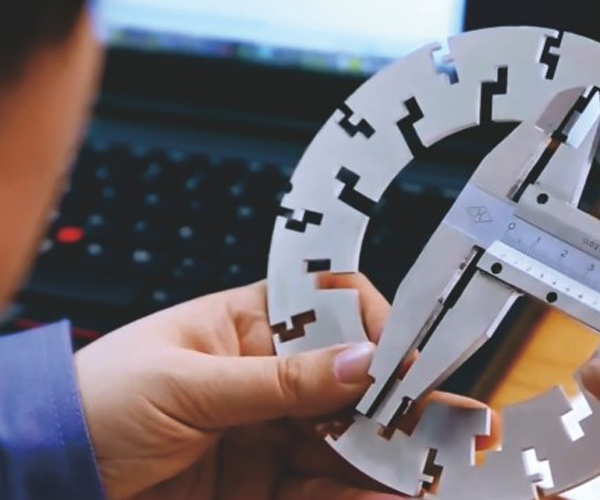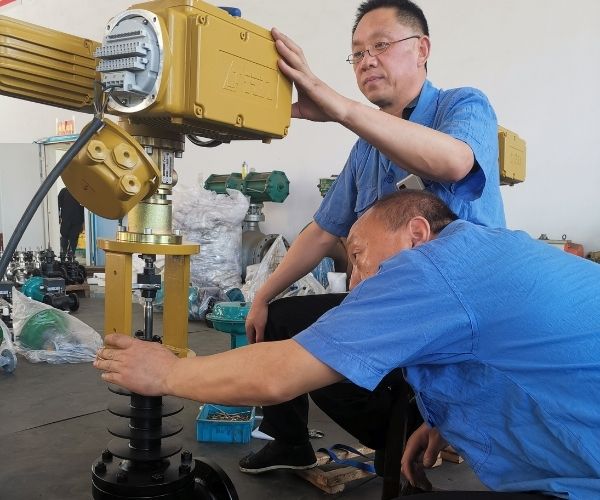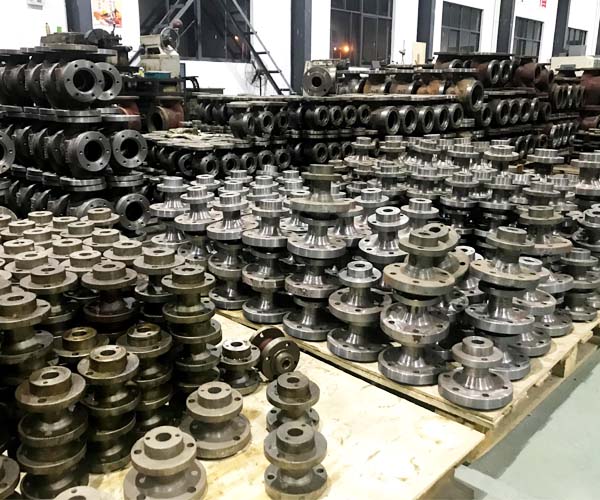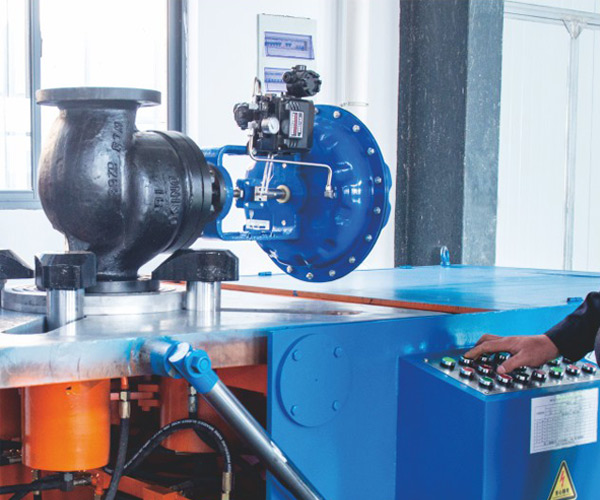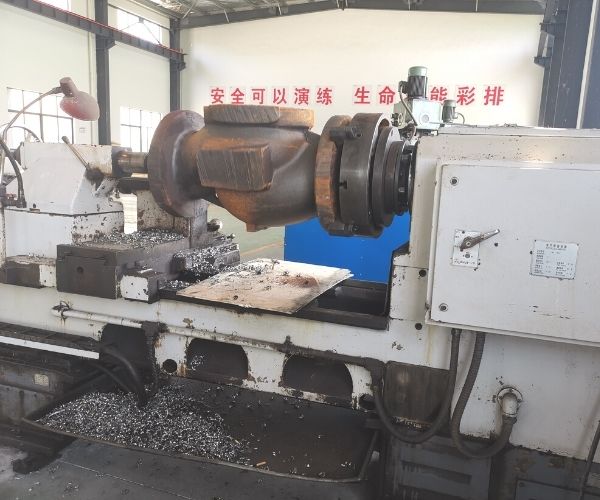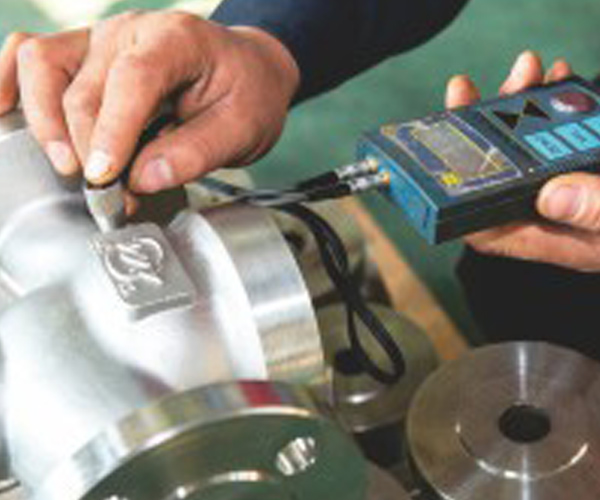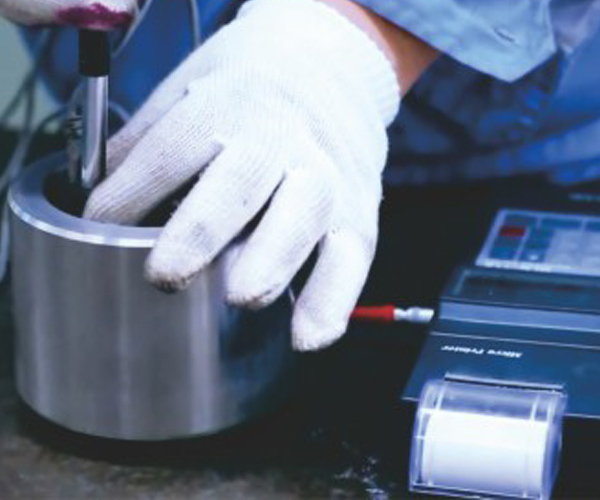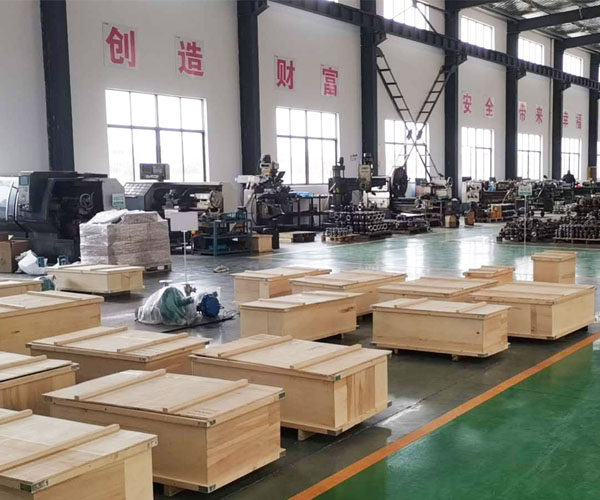Professional Self Regulated Control Valve Manufacturer
- Energy saving: no need for additional energy, can work in the place without electricity and gas
- High stability: automatically adjust the valve opening to maintain the stability of parameters
- High regulation precision: the pressure segmentation range is fine and cross each other.
- Sensitive response: adopting pressure balancing mechanism, precise control
- Convenient installation: the body of the pressure, pipeline installation
- Wide range of regulating media: water, oil, air and other flowing media,etc
Get in Touch with Us
BCST your Expert Self Regulated Control Valve Supplier in China
BCST is the original control valve manufacturer in China for over 20 years. With a professional technical team, instrumentation, and valve experience.
BCST has abundant experience in various industries. In the oil and gas industry, sugar mill industry, for power station, etc. Anywhere, BCST has professional experience for a differential industry solution.
BCST your One-Stop Self-Regulated Control Valve Solution in China
BCST substantial choice of self regulated control valves gives the fine answer to your requirements. BCST is a skilled and experienced control valve producer. As an ISO-registered company, BCST has a robust expert heritage and informed personnel with over 20 generations of producing and export experience.
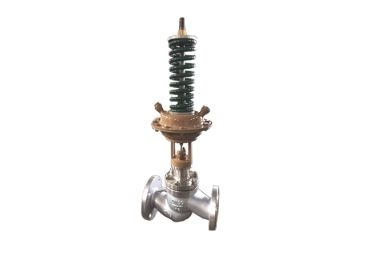
Self Regulated Downstream Control Valve
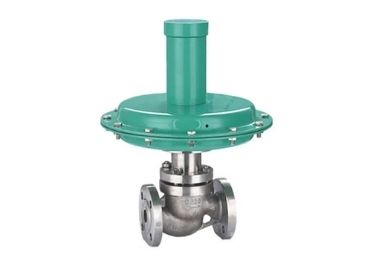
Self Regulated Micro Flow Control Valve
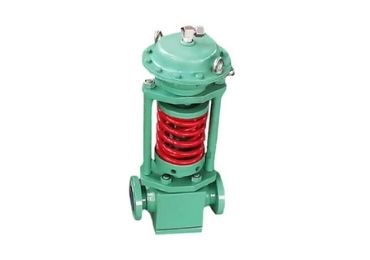
Self Regulated Pressure Control Valve
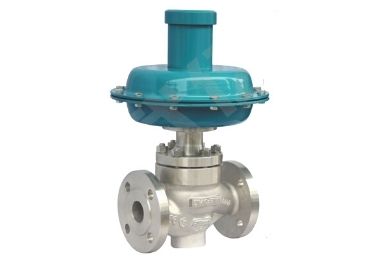
Self Regulated Micro Pressure Control Valve
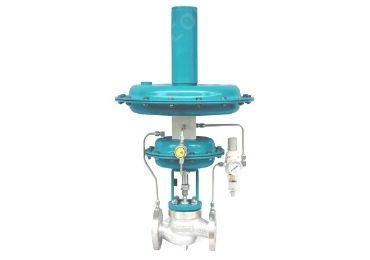
Self Rgulated Nitrogen Seal Control Valve
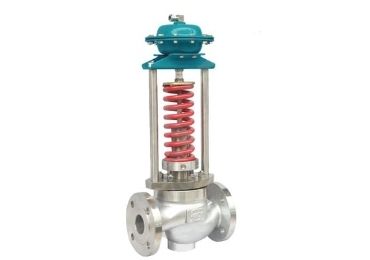
Self Regulated Flow Control Valve
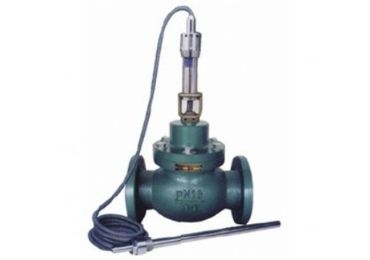
Self Regulated Temperature Control Valve
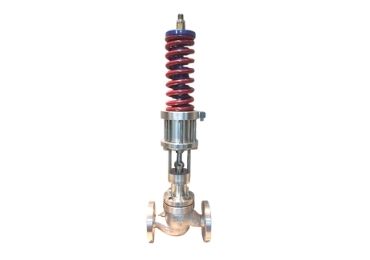
Self Regulated Upstream Control Valve
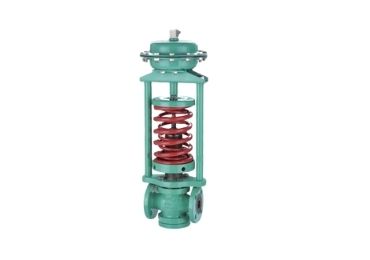
Self Actuated Flow Control Valve
BCST your BEST Supplier for Self Regulated Control Valve
BCST self-regulating control valves utilize the pressure of fluid flow in the pipeline to regulate the flow rate without the need for an external driving force.
BCST self-regulating control valves require no additional energy and can be operated in areas without electricity or gas, which is convenient and saves energy.
BCST self-regulating control valves offer a complete package of solutions. Bcst self-regulated control valves comply with ANSI, JIS and DIN standards.
BCST self-regulating control valve can easily realize the flow distribution of the system; it can realize the dynamic balance of the system; it can greatly simplify the debugging work of the system; it can stabilize the working condition of the pump.
Welcome to contact us to understand more about our products.
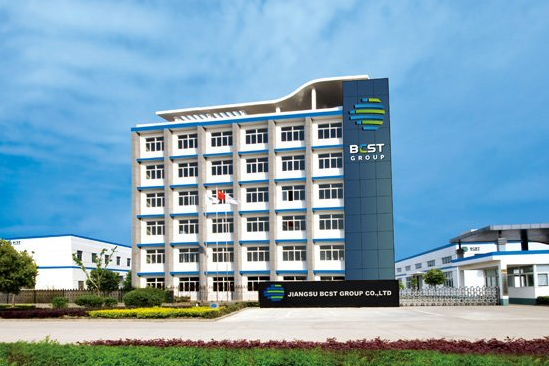
BCST Self Regulated Control Valve Quality Control
Get the Latest Catalogue Now!
Your Expert for Self-Regulated Control Valve from China
BCST Self- Regulated control valves use the energy of the controlled medium itself as the power source, introduce actuators to control the position of the valve plug to change the flow area, and change the pressure difference and flow rate at both ends, so that the pressure upstream or downstream of the control valve is stabilized at a given value. The self-operated upstream or downstream pressure control valve is used for the occasions without power supply, gas supply and need to control, with the advantages of sensitive action, good sealing performance, small pressure fluctuations and so on. It is widely used in a variety of industrial equipment, for gas, liquid and vapor media pressure reduction and pressure regulation of automatic control.
DN (mm) | 20 | 25 | 32 | 40 | 50 | 65 | 80 | 100 | 125 | 150 | 200 | 250 | 300 | |
Rated flow rate | Single seat | 7 | 11 | 20 | 30 | 48 | 75 | 120 | 190 | 300 | 480 | 760 |
|
|
Container | 7 | 11 | 20 | 30 | 48 | 75 | 120 | 190 | 300 | 480 | 760 |
|
| |
Double seat |
|
| 22 | 33 | 53 | 83 | 132 | 209 | 330 | 528 | 836 | 1210 | 1925 | |
Rated stroke (mm) | 8 | 10 14 | 20 | 25 | 40 | 50 | 60 | 70 | ||||||
Pressure Adjustment | 15 -50 40-80 60-100 80-140 120-180 160-220 200-260 240-300 280-350 | |||||||||||||
1. Plug type: single-seat/cage-guided/double-seat.
2. Action type: downstream regulating (type b), upstream regulating (type K); .
3. Nominal Diameter: dn15 mm to 300 mm (1/2″ to 12 “).
4. Flow rate characteristics: fast opening.
5. Adjustment accuracy: ± 3 to 10%.
6. Application temperature: ≤ 350 °C.
7. Pressure reduction ratio: Maximum ratio is 10, minimum ratio is 1.25;.
8. Nominal pressure: PN16, PN25, PN40, PN63, PN100, Class150, Class300, Class600.
9. Connection type: flange, welded, threaded.
10. Body and bonnet materials: WCB, WC9, CF8, CF8M.
11. Actuator type: diaphragm type, piston type, bellows type.
12. Packing: PTFE, Flexible Graphite.
13. Surface Coating: Silver Gray (Epoxy); Uncoated when body is stainless steel.
- Technical software caculation
- Technical team meeting
- CAD drawing confirmation
Assembly
- Installation
- Calibration
- Chemical Analysis
- Mechanical Propery
- dimension Checks
- Visual Checks
- Non-destruction Examination
Hydrostatic Test
- Shell test
- Sealing test
- Leakage test
- Air test
- Function test
- CNC machining
- Visual checks
- Dimensional checks
- Liquid penetration test
Outlook Treatment
- Surface Polish
- Painting
- Visual inspection
- Thickness checks
- Visual checks
- Liquid penetration
- Test
- Hardness test
- Lapping
- Dimensional checks
Packing
- Marking
- Exported wooden box
Self Regulated Control Valve -FAQ
What are the advantages of a Self-regulated-control-valve?
Self-Regulator Control Valve has always been famous among different vendors for its affordability, low cost, functional reliability, and long operational life.
Below are some significant advantages of Self Regulator Control Valve, those make the Self Regulator Control Valve more unique from other types of control valves.
Low Cost – Our Self Regulator Control Valves offer customers a meager cost of ownership. As the unique design of the valve bodies, maintenance is made extremely easy; due to this, all service kits for standard valves are kept at a cheap cost and, in most cases, are readily available in the market.
Quickly Assemble and Operation – Installation, operation, and assembling of Self-Regulator Control Valves is easy with BCST valves, with most standard valves having a very low compact design and net weight. The control valves can be installed and operated even in challenging areas we cannot easily navigate. The solid structure of the valve bodies helps operation in challenging environments and demanding applications.
Top Safety Levels – Based on over 20 years of experience of BCST in China, the tested and proven designs of these Self Regulator Control Valves offer end users a continued functionality even in the complex. The primary situation like power failure, as no external electrical inputs are required with zero risk of damaging the process.
Sustainability – With the effective consultation for BCST, our valves are designed to have the best operational lifetime. With the proper selection for your application, these self-regulatory control valves offer customers hassle-free installation and negligible maintenance.
Precautions for the installation of a Self-regulated Control Valve?
The main precaution of installation of a self-regulated control valve are:
- The pressure point should be taken at the appropriate position of the pressure regulating valve. The pressure regulation before the valve should be more significant than 2 times the pipeline’s diameter, and the pressure regulation after the valve should be greater than 6 times the pipeline’s diameter.
- According to the calculation, the diameter of the self-operated valve can be smaller than the pipeline’s diameter. In contrast, the stop valve, cut-off ball valve, bypass valve, and filter can’t be more modest than the distance across the pipeline.
- Appropriate space should be around the pressure regulating valve to facilitate on-site maintenance and operation.
- The filter before the valve may not be installed when the medium is clean gas or liquid.
What are the types of Self-Regulated Control Valve?
The types of self-regulated control valves are:
- Self-regulated pressure control valve
- Self-regulated flow control valve
- Self-regulated temperature control valve
- Self-regulated downstream control valve
- Self-regulated upstream control valve
- Self-regulated electric temperature control valve
- Self-regulated high-pressure control valve
- Self-regulated micro pressure control valve
- Self-regulated nitrogen seal control valve
1- Self-regulated pressure control valve
At the point when the tension point is before the valve, it is utilized to direct the steady strain before the valve; when the tension point is behind the valve, at the point when the strain point is behind the valve, it is utilized to change the tension behind the valve to be consistent, when the pre-valve and post-valve pressures are simultaneously introduced into both sides of the actuator’s air chamber.
The working principle of the self-regulated pressure regulating valve is that the medium flows into the valve body from the direction of the arrow and is output after being throttled by the valve seat and valve core. The other path is introduced into the actuator through the pressure pipe (the condenser is added when the medium is steam) and acts on the diaphragm so that the valve core will respond accordingly.
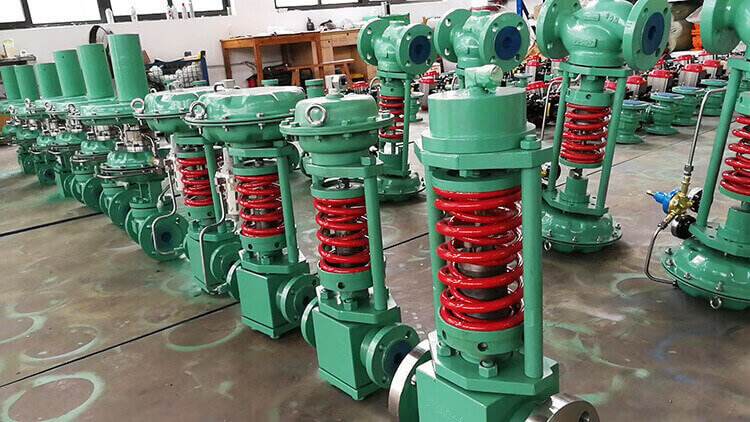
2- Self-regulated flow control valve
The self-regulated control valve is another kind of control valve. It is looked at with a manual control valve, and its benefit is that it may be changed very well. Contrasted an electric control valve, its benefit is that it doesn’t require external power.
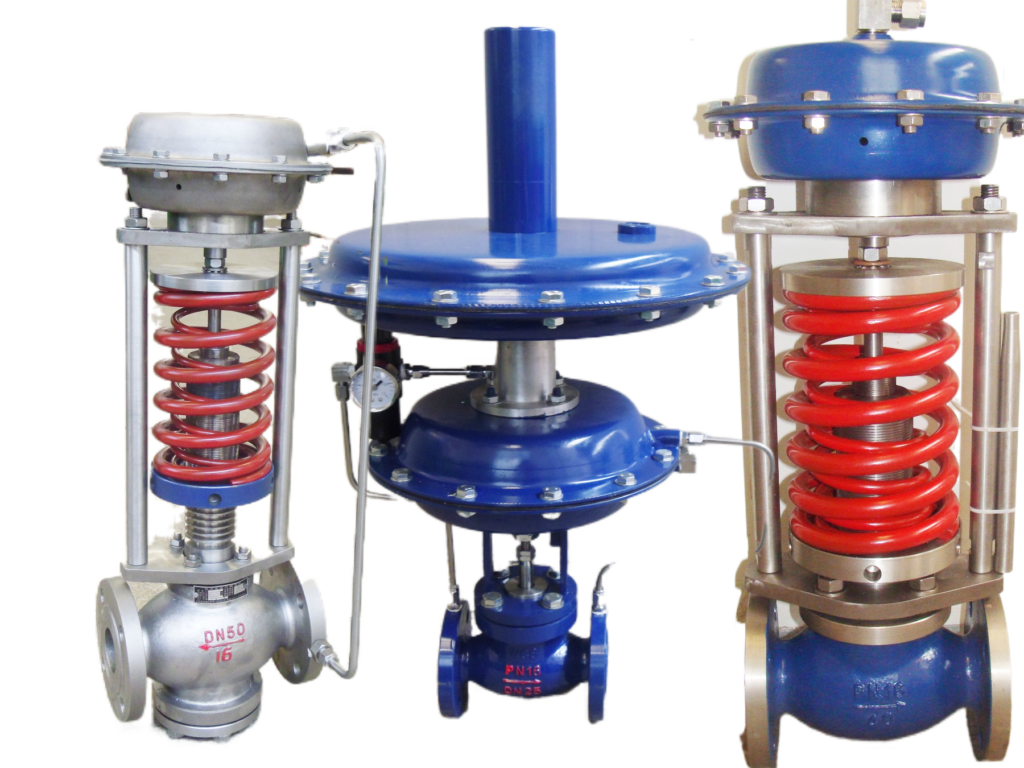
The practice has demonstrated that in the shut water dissemination framework (for example, high temp water warming framework, cooling refrigeration framework), the correct utilization of this valve can undoubtedly understand the progression of the framework.
It can accomplish dynamic equilibrium of the framework, incredibly improve the troubleshooting of the framework, and balance out the functioning condition of the siphon. In this way, oneself working controlling valve has vast application possibilities in warming and cooling design.
The function of the self-regulated flow control valve is to maintain a constant flow through the valve when the pressure difference between the inlet and outlet of the valve changes to keep up with the controlled article in series with it (like a circle, a client, a gadget, and so forth.
The same as below) has a constant flow rate, and there are many names for self-regulated flow control valves, such as self-regulated flow balance valve, constant flow valve, self-balancing valve, dynamic flow balance valve, etc.
In structure, the self-operated flow Oneself worked stream control valve is a twofold valve mix, which comprises a manual control valve bunch and a programmed balance valve bunch. The manual control valve can set the stream rate, and the programmed balance valve can keep up with the constant flow.
3- Self-regulated temperature control valve
The self-regulated temperature control valve is an energy-saving valve that does not require external energy and relies on the temperature change of the medium to be adjusted for automatic adjustment. It has exhaustive elements of estimation, execution, and control.
A self-regulated temperature control valve manages automatic adjustment using the principle of liquid expansion due to heat and the incompressibility of liquid. The fluid extension in the temperature sensor is uniform, and its control capability is a relative guideline.
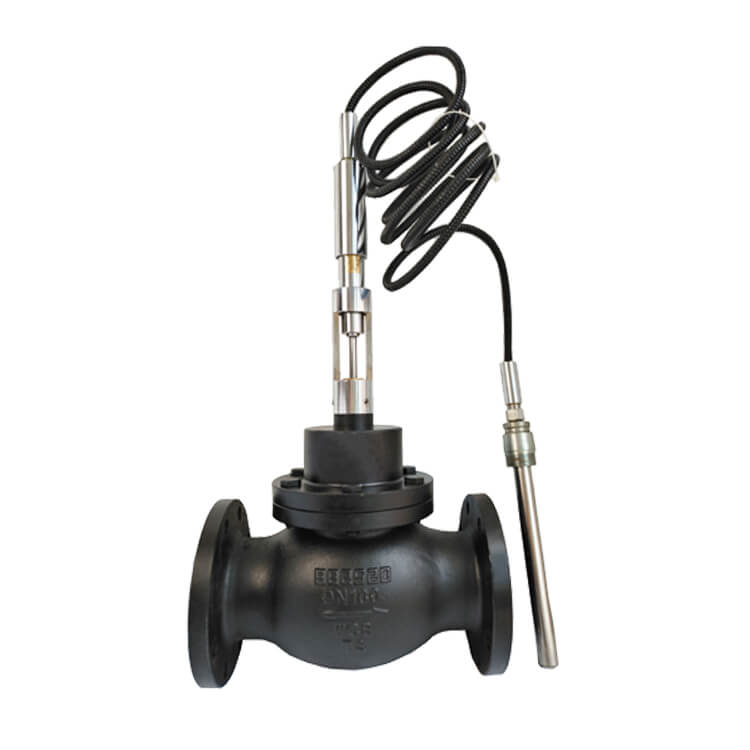
When the controlled medium temperature changes, the volume of the temperature-sensing liquid in the sensor expands or contracts with it.
When the controlled medium temperature is higher than the predefined value, the temperature liquid expands, pushing the valve core downward, which helps close the valve, reducing the flow of the heating medium.
Also, when the controlled medium temperature is lower than the predefined value, the temperature-sensing liquid shrinks, and the return spring pushes the valve. The core is opened to increase the flow of the heat medium. Scope of application: heating and air conditioning, domestic hot water, petrochemical, electric power, electromechanical, textile, rubber food, and other industries.
4- Self-regulated downstream control valve
Self-regulated downstream control valves are independent, self-operating controls that use energy from the controlled system to operate and regulate pressure. Valve Solutions produce an assortment of strain-decreasing controllers to oversee downstream framework tension in low, medium, and high stream applications, with models accessible in the stomach, cylinder, or a combination of both to suit different applications.
The tension diminishing controller keeps up with the ideal decreased outlet strain while giving the ideal liquid stream to satisfy varying downstream needs. The valve that maintains reduced pressure is the outlet pressure setting of the regulator.
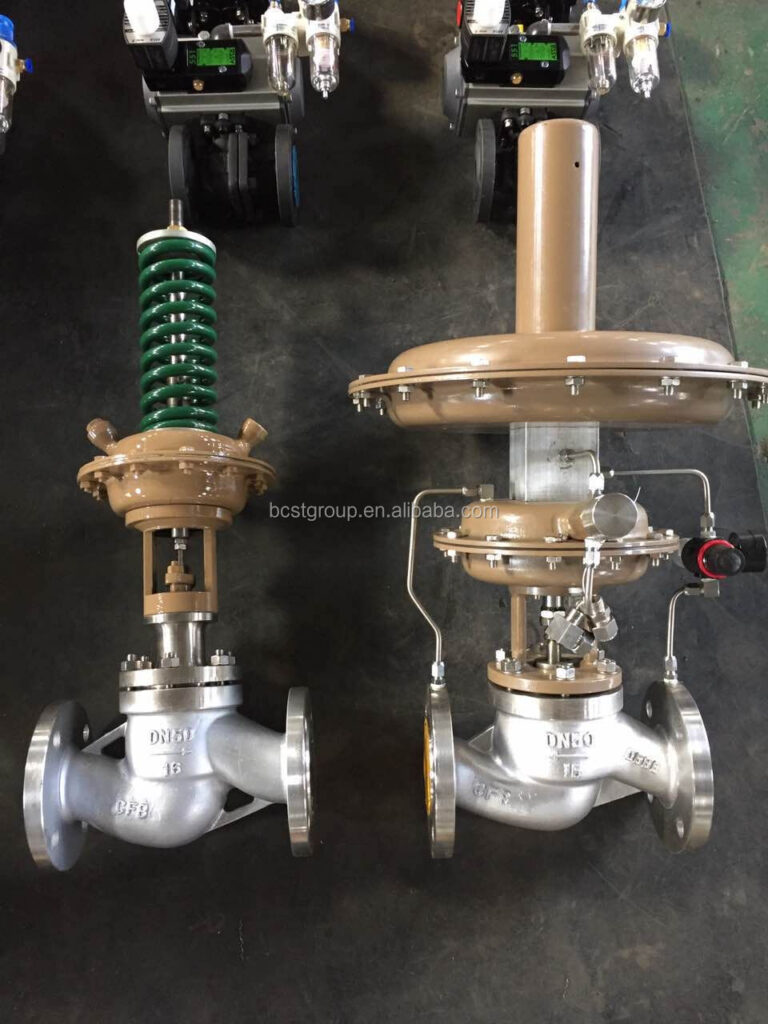
5- Self-regulated upstream control valve
A self-regulated upstream control valve regulates the upstream pressure and keeps it constant by utilizing a 3-way metallic pilot regulator. The valve opens as soon the upstream pressure exceeds a certain level regulated in the pilot.
This valve makes it possible to have a stabilized upstream pressure independent of variations in flow and pressure. The valve closes completely when the upstream pressure becomes lower than the set pressure.
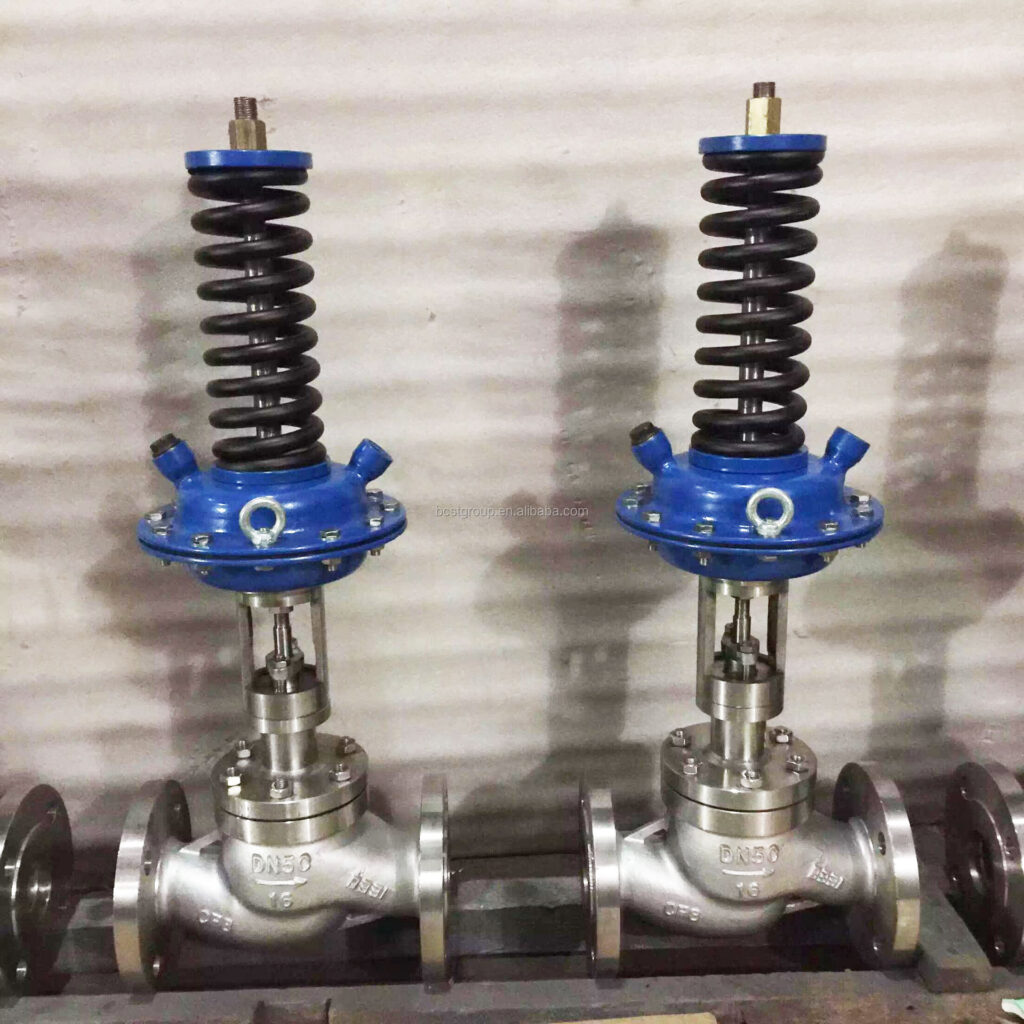
6- Self-regulated electric temperature control valve
A self-regulated electric temperature control valve, referred to as a temperature control valve, is a typical application of a flow control valve in the field of temperature control. The outlet temperature of the control device is reached. When the load changes, the flow is automatically adjusted by changing the valve opening to restore the temperature to the set value and eliminate the influence of load fluctuations.
It is small, lightweight, has a simple connection, large flow, and high adjustment accuracy. It is widely used in industrial process automatic control systems in electric power, petroleum, chemical, metallurgy, environmental protection, light industry, teaching and scientific research equipment, and other industries.
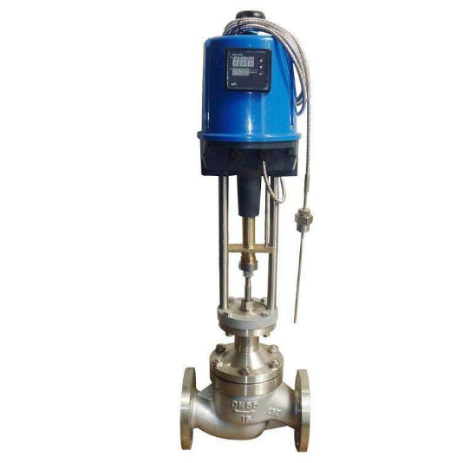
The regulator has precise control, multi-circle control, and various capabilities, which can understand the control of liquid stream, pressure, differential strain, temperature, mugginess, enthalpy, and air quality.
The actuators are electromechanical and electro-water driven, with manual and programmed change capabilities, touchy change, enormous shutting force, and flexible stream qualities (straight equivalent rate). Electro-water powered actuator with programmed reset assurance capability.
7- Self-regulated high-pressure control valve
Self-regulated high-pressure control valve used to adjust the flow of water supply, suitable for working temperature <540 degrees Celsius, medium water, oil, steam, etc. The high temperature and high-pressure differential control valve is suitable for the feedwater bypass pipeline of medium and high-pressure boilers with a working temperature.
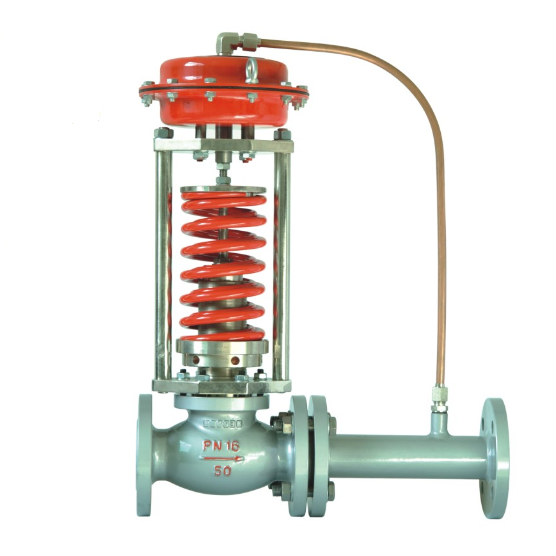
- The valve body adopts four-stage throttling, mainly composed of the valve body, valve seat, valve stem, valve disc, bracket, etc. The overall arrangement is Z-shaped.
- Adopt pressure self-tight sealing structure.
- The valve seat is a surfacing part, which consists of four parts, each part is made of stainless steel, and the sealing surface of the valve seat is surfaced with cobalt-based cemented carbide.
- The throttling part of each stage is made into a reasonable linear shape. Due to the multi-stage depressurization method, cavitation and noise can be prevented, and the flow can be stably adjusted.
- The disc and valve stem are connected by pins and guided by the upper and lower bushings.
- An electric actuator controls the switch of the valve.
8-Self-regulated micro pressure control valve
Self-regulated micro pressure regulating valve belongs to the series of self-operated pressure regulating valves, which is a self-operated valve that does not require any external energy. The valve controlled by the medium’s energy is a self-operated valve between ZZYP and ZZYVP in the self-operated valve series. It is mainly used when pressure is before the control valve.
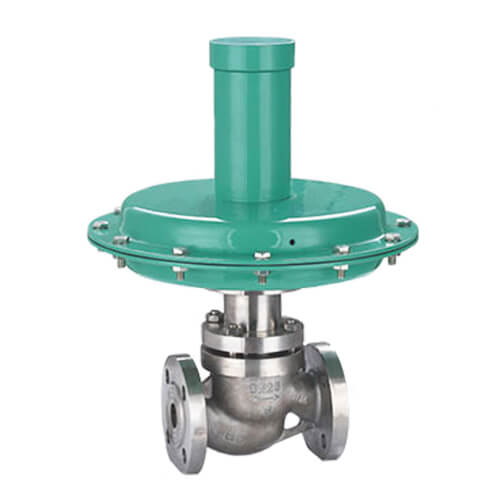
- The adjustment spring is designed above the membrane actuator, which is convenient for on-site debugging.
- There is no packing, there is no friction when the valve stem moves up and down, and the upper seal is reliable
- The sensitive elements of the actuator are susceptible, and minimal pressure changes will be sensed.
- The valve body is in the form of a four-way, so K and B types can be used for one valve body.
- Balanced structure, not affected by pre-valve pressure.
The valve adopts a large-diaphragm actuator, which has large and stable output force, is extremely sensitive to small changes in pressure and flow, and has high control accuracy. There is a balanced diaphragm installed (to balance the pressure before the valve and eliminate the unbalanced force). The pressure after the valve enters the diaphragm actuator through the pressure pipe. Compared with the diaphragm actuator adjustment spring, the pressure cannot reach the set value (adjust the compression Actuator spring) after the valve increases and vice versa.
9-Self-regulated nitrogen seal control valve
A self-regulated nitrogen seal control valve comprises a control valve, actuator, pressure spring, pilot, pulse tube, and other components. The self-operated nitrogen sealing valve is mainly used to keep the pressure of the protective gas (usually nitrogen) at the top of the container.
To avoid the direct contact between the material in the container and the air, to prevent the material from volatilizing and being oxidized, and to maintain the safety of the container. It is especially suitable for various large storage tanks’ gas seal protection systems.
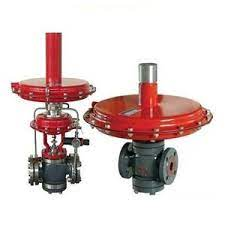
The product has the characteristics of energy-saving, sensitive action, reliable operation, convenient operation and maintenance, and so on. They are widely used in petroleum, chemical, and other industries.
Nitrogen is filled into the tank; when the pressure in the tank rises to the pressure set point of the nitrogen supply device, the command is closed due to the preset spring force. Due to the spring action in the primary valve actuator, the main valve is closed, and the nitrogen supply is stopped.

